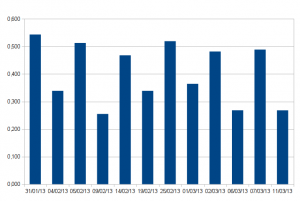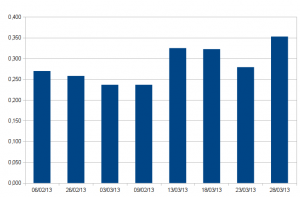 =>
=> 
I have written that SPOT4 (Take 5) was working as a clockwork, but I have to admit that the ortho-rectification of SPOT4 images is not as easy as I thought initially. 



I have written that SPOT4 (Take 5) was working as a clockwork, but I have to admit that the ortho-rectification of SPOT4 images is not as easy as I thought initially. 



